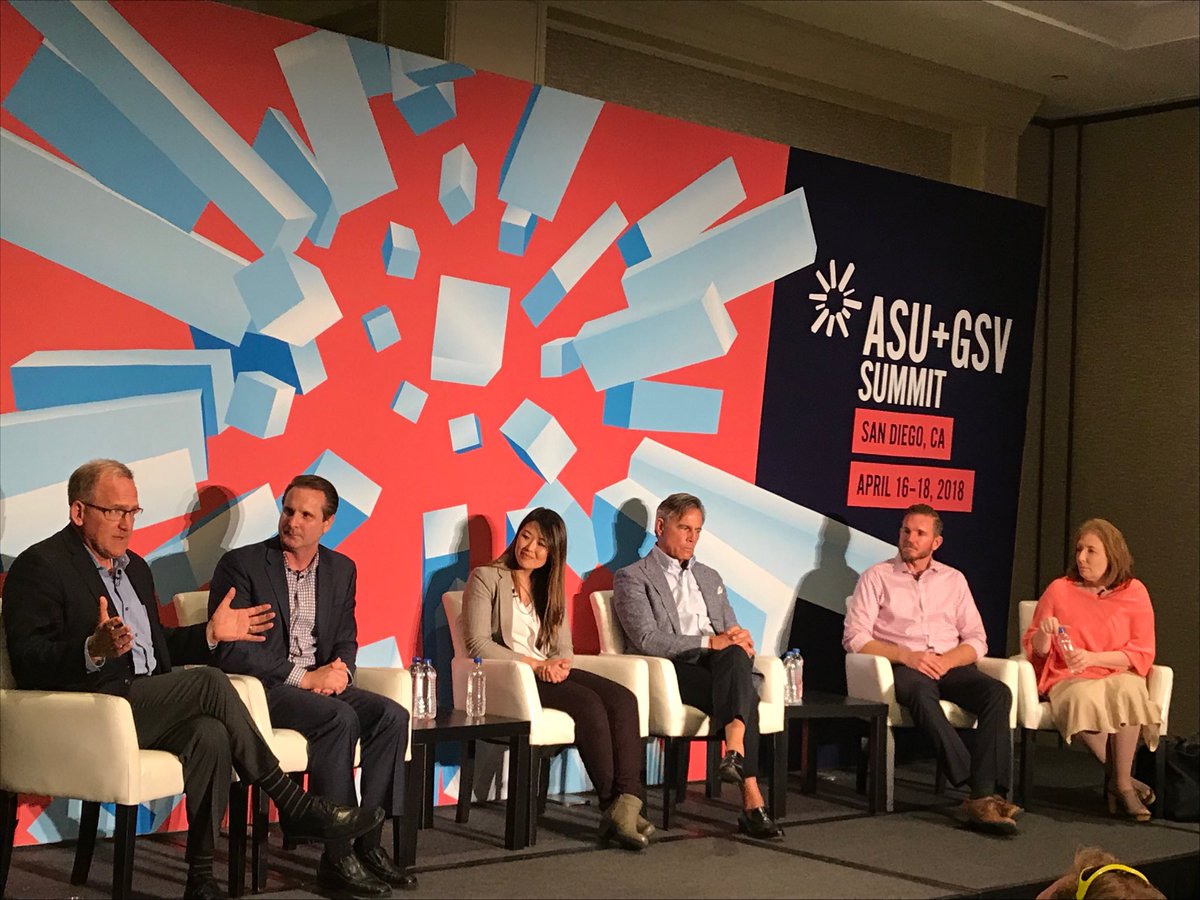
Last month over 4,000 attendees gathered in downtown San Diego for the 9th annual ASU+GSV Summit. World leaders from over 40 countries joined innovative tech companies and education and workforce development professionals to discuss the future of education and the world of work.
The Talent Cities: A Smart Cities Approach to Talent session called on local area experts to talk about the Talent Cities program, designed to connect education to employment—proactively, closing skills and knowledge gaps (referring to the gap in awareness of careers available in a given sector)—before they happen while using a more inclusive approach to building lifelong learning and fueling the talent base for San Diego’s priority sectors.
The goal of Talent Cities is to produce ROI for employers to better manage talent and close the knowledge gap within a given sector. The pilot implementation is helping connect young people with relevant work environments that develop essential skills. These skills are picked up through employer-led field trips that introduce young people to the real world of work, helping them develop skills needed to succeed in the workforce. The talent gap begins to shrink as a career match is made between a student who is practicing lifelong learning and an employer who needs a competitive learner.
Panelists speaking about this program included:
- Moderator: Gerri Burton, CEO of New Learning Ventures
- Tina Ngo Bartel, Director of Center of Excellence for Labor Market Research
- Phil Blair, Executive Officer/owner of Manpower San Diego
- Peter Callstrom, CEO, SDWP
- Matt Doyle, Assistant Superintendent of Innovation of Vista Unified School District
- Steve Post, Principal of Vista Magnet Middle School, Vista Unified School District
The discussion focused on connecting education to employment, closing knowledge gaps before they happen and building lifelong learning while fueling the talent base for priority sectors. Here’s what we learned:
College isn’t right for everybody
While employers may say they want an employee to have a four-year degree in a job description, when they actually hire someone they take work experience, past projects and portfolios more into consideration than the actual degree, according to Bartel.
Essential skills like critical thinking, problem-solving and teamwork that employers often report as difficult to find in candidates can be developed at the student level in various ways, including experiences offered by Talent Cities. The program introduces middle school students to the workplace by engaging in self-exploration and interest-based career learning, organizing field trips to businesses designed for employees to describe their work and give visiting students an opportunity to solve micro-problems related to that field.
“Site visits to businesses and employers show young people what interests them as well as what does NOT interest them, which is just as important,” Blair added.
Exposure to workforce education must begin earlier
“We can’t just focus on young adults who are 18 and up,” said Callstrom. “If we do that we are missing out on the opportunity to shape and form students at the right age.”
To stay ahead of the skills gap, we must begin to show students and parents what career pathways are available earlier. This is why programs like Talent Cities are so important because we can work to close skill and knowledge gaps before they happen.
“When students don’t have the opportunity to gain work experiences like internships or externships—which are global talent bridges—they are missing out on what it’s really like to be at work and what the job of their dreams may actually be, “Callstrom said. Early childhood exposure to workforce options also encourages lifelong learning, which is beneficial not only for the individual but for their future employer as it increases field knowledge and competitiveness within that industry.
“When we meet with students, the number one point of feedback they give us is that school doesn’t feel particularly relevant for them,” says Doyle. Educational programs that focus on real workplace experiences create a sense of relevancy that ties current and future education paths directly to potential careers.
Public-private partnerships are key to closing the skills gap
Talent Cities is a partnership with private and public involvement, offering flexibility, expertise and resources, which allow the program to realize its vision to bridge education and employment. These types of partnerships enable educators and employers to grow meaningful programs that give young people access to workforce pathways. “[SDWP] is a public-private entity publicly funded by the Department of Labor and then we have city contracts, county contracts and also get support from the private sector, our board chair and a couple dozen other private sector companies who are investing in what we do so that we can then fund programs and deliver,” Callstrom explains.
